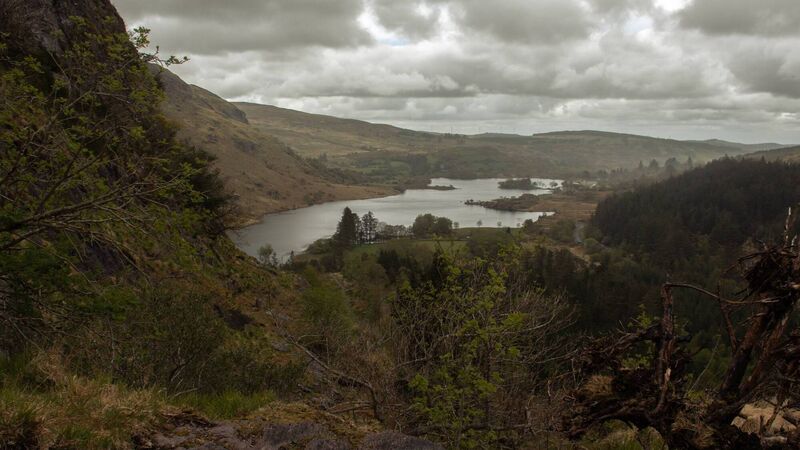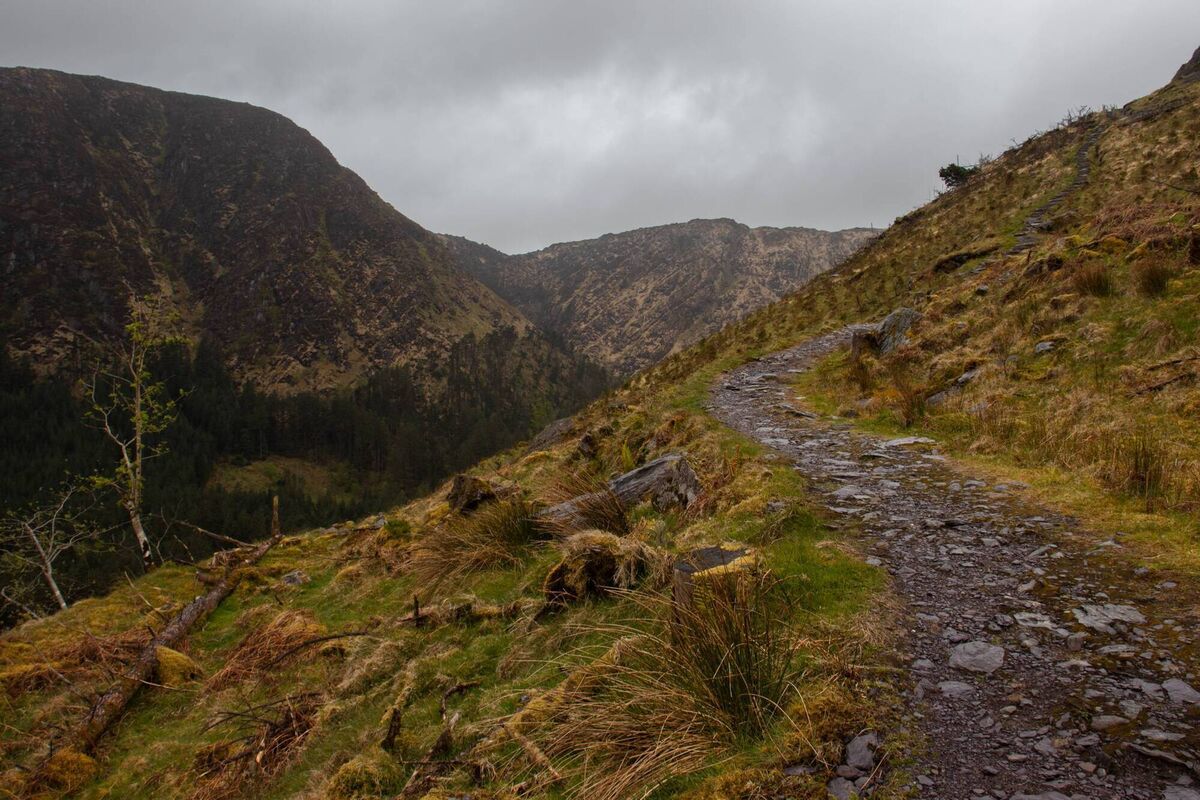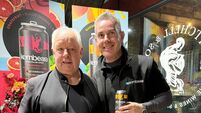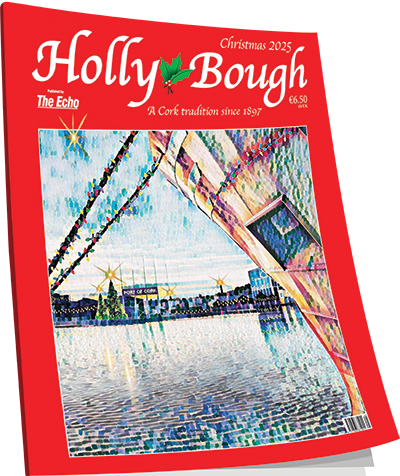It felt like the mountain range was my own when I visited Gougane Barra

A STUNNING VISTA: Gougane Barra, in County Cork. Next week in our series, Richard visits Doneraile. Pictures: Richard Gordon
DRIVING west towards the Kerry border, I entered the Gaeltacht and drove through ‘Béal Átha an Ghaorthaidh,’ or Ballingeary, which is derived from ‘mouth of the Gearagh’.
The Gearagh is a nature reserve outside Macroom and it is partially submerged with freshwater. This rich area of ancient Irish wilderness was carved out when the glacier at Gougane Barra melted during the last ice age, creating the fluvial-glacial outwash plain that turned into a stunning woodland.
I was headed to where the glacier once sat and as I wound my way along the quiet country road, it was intermittent with small lakes and streams; clearly displaying the interconnected drainage basin that was created when that glacier melted.
The rippling metallic sheen from the bodies of water are something I intrinsically associate with Irish countryside on overcast days.

The further west I got, the wilder and more mountainous the terrain became, littered with exposed rocks and plots of yellowish grass and scrub with green and slighly purple hues.
As I pulled into the car park at Gouganne Barra, I killed my engine, rolled down my windows and listened to the melody of rural Ireland perforate through the air. The baaing of sheep, the richly musical tones of birds at various octaves, and a subtle breeze washing over the calm and the silence.

I had a quick gander by the famous St Finbarr’s Oratory, which is admired the world over for its incredibly picturesque quality, and then I continued on to the National Forest Park that’s managed by Coillte. There was an option to walk in for free or to pay a fiver and drive in, and since the day was so quiet and I had the road to myself, I opted to drive in. I was glad I did as the road that’s laid amidst the coniferous plantation in the valley of the park is a stunning drive.
Perfectly perpendicular trees abound atop a lush bed of mossy grass, standing there offering shade over the roof of my car as I’m gliding through them.
The scope and magnitude of the park is really felt when you can slowly roll through and absorb the collosal pocket that it is and look up to the mega-unit domes of rock.

I parked at the last car park and followed the furthest trail from the entrance I could find out of the myriad of webs to choose from. The difficulty with an Irish spring is the erratic flux of our weather, but the good thing about this inconsistent weather is that if you’re willing to brave it on quiet days, you can have areas of outstanding beauty all to yourself. It felt as if the whole mountain range was my own.
The low-hanging, heavy clouds certainly shone a silver essence over the area for me to enjoy. A pair of wellies and an anorak and I was ready for whatever the clouds could drench down upon me.
I marvelled at the steep staircase of slabbed rocks that took me up the side of the mountain, with little bridges to cross streams and twists through clustered wooded patches.
There are parts of this wood that are the archetypical ‘fairy-tale forest’. An enormous canopy high off the ground, huge boulders with shadowed nooks underneath them, so much cushioned moss and the constant tune of water flowing. I’m surprised I didn’t see an angelic apparition playing the harp in the misty light that textured the air.

The water that flows through is actually the beginnings of the River Lee, and it’s signposted as ‘An Laoi’. Fascinating to see the origins of this translucent trickle of energy that eventually wraps itself around the island of Cork city centre 89km away.
I reached somewhere near the top of the Sheehy mountains and took a few deep breaths, gazing out onto the panorama with rain riding on the wind and washing my face with moisture. The lake where St Finbarr’s Oratory sits could be seen in the distance and looked like a flat puddle of reflection. I was hoping for some sun to break through and give me some light-falls over the land, but I had no such luck.
I met a hiker, Pat, who was fully kitted out in storm-proof clothing from head to toe doing a little recce work for his hiking group. We chatted on the edge of the mountain for a few moments and he informed me of the stunning plateaus on the far side of the valley. His tip has been duly noted and I’ll be returning no doubt to explore some more of these beautifully serene uplands.






 App?
App?





